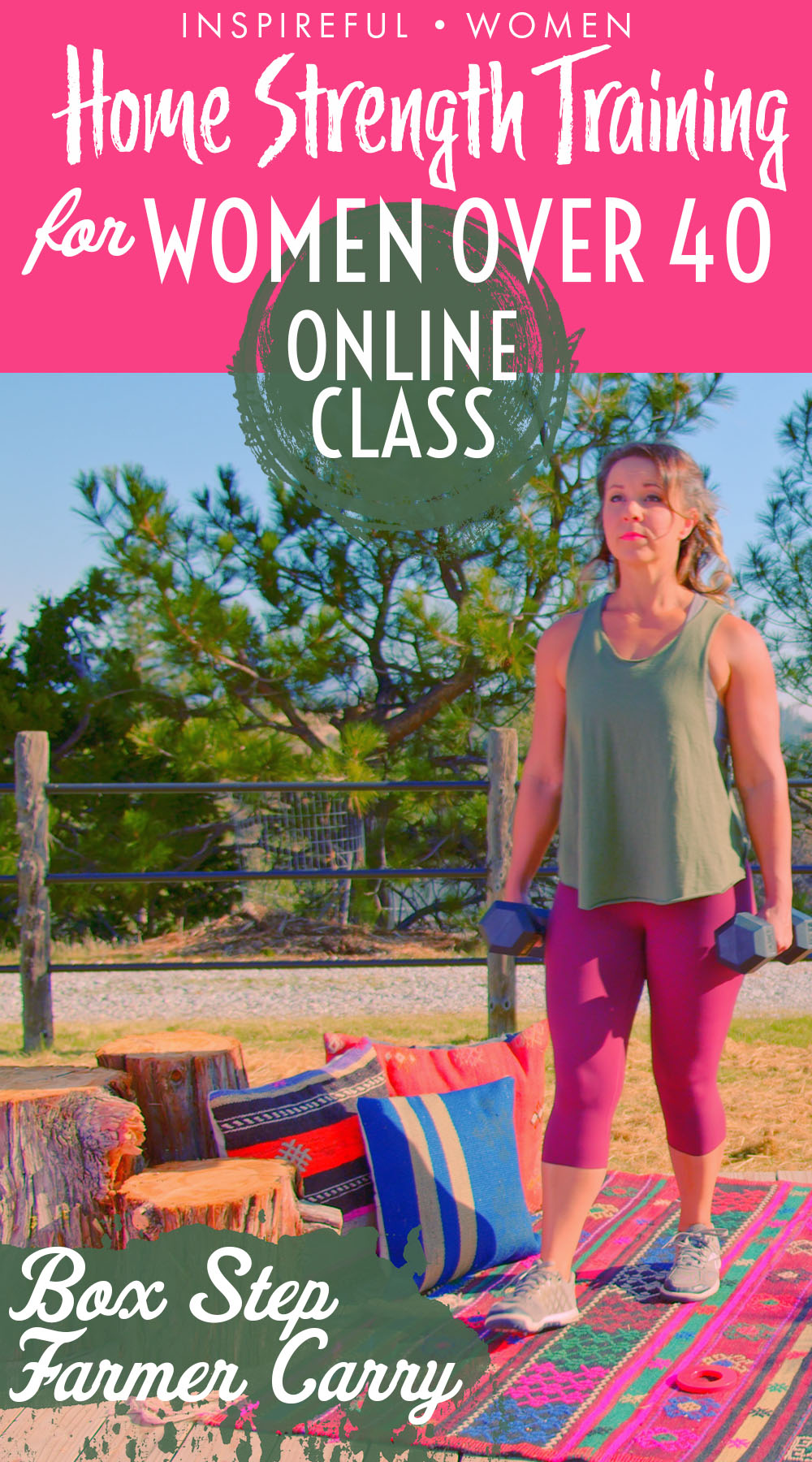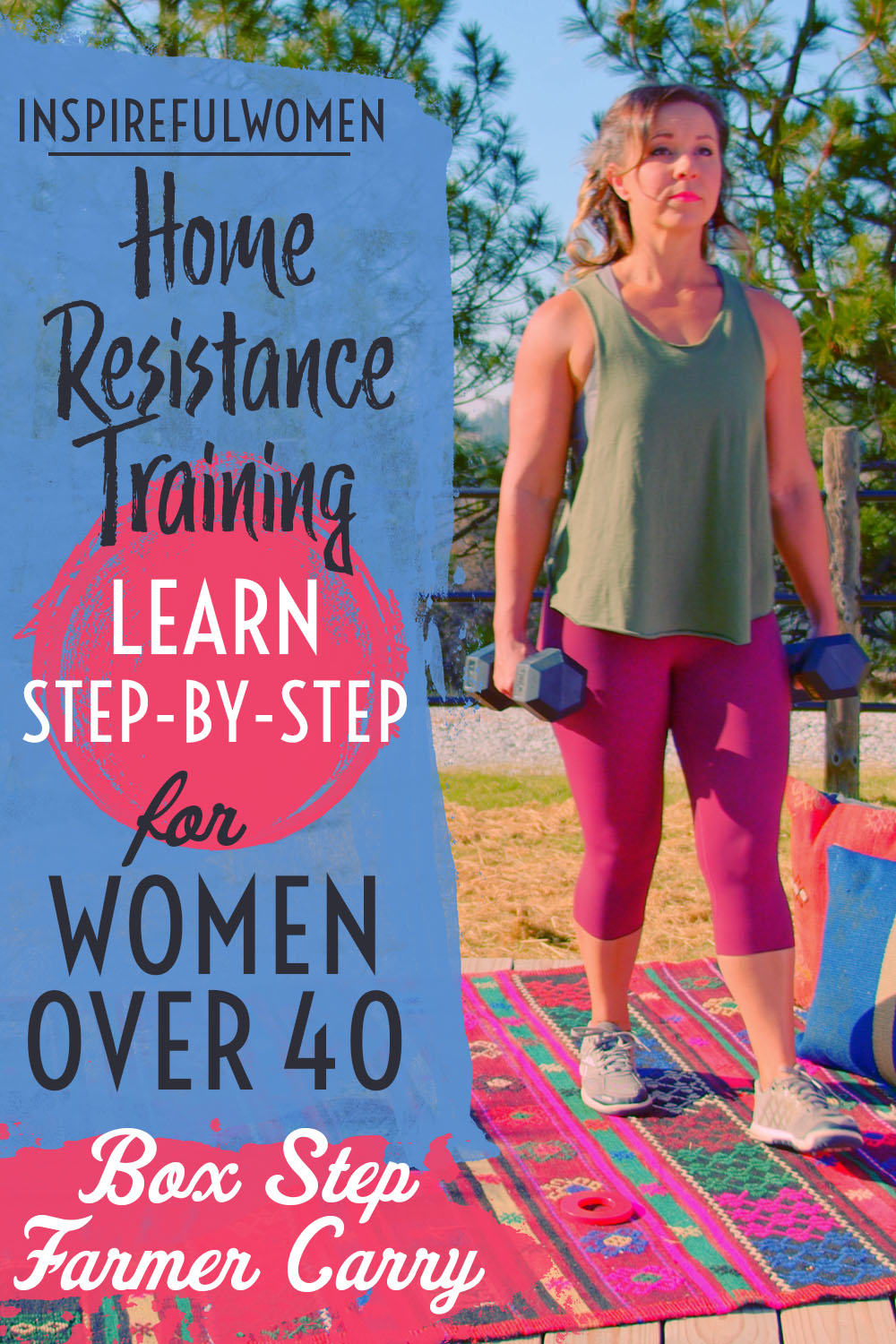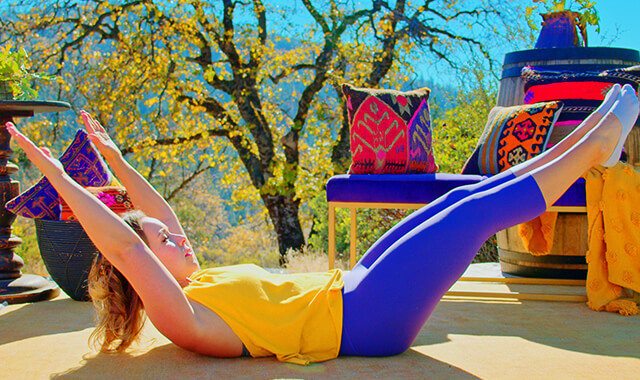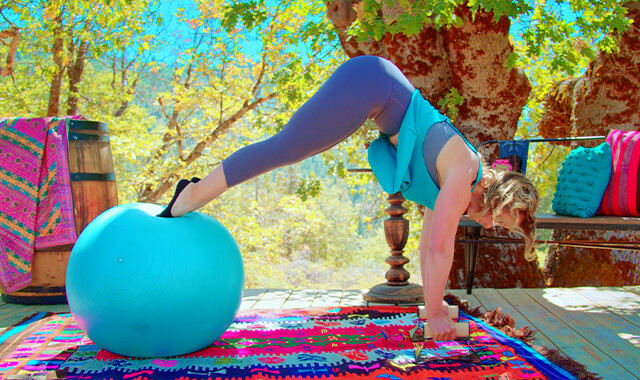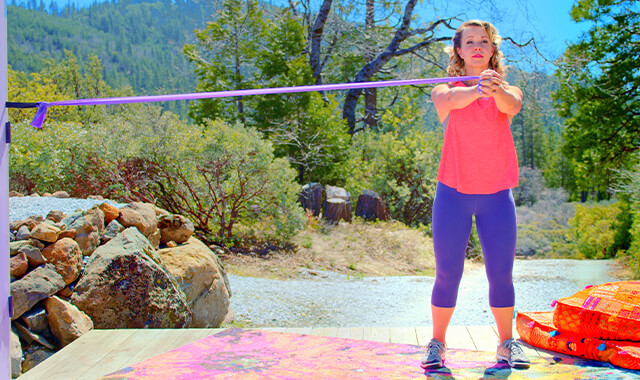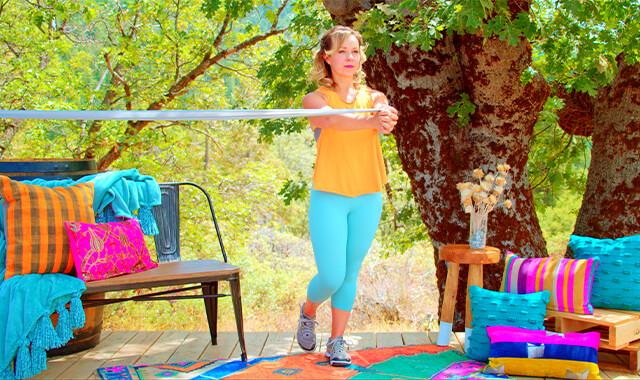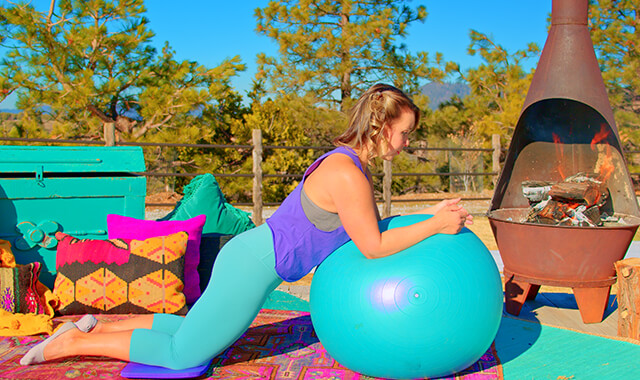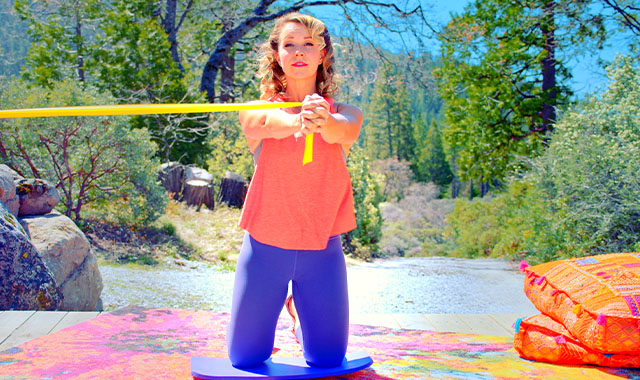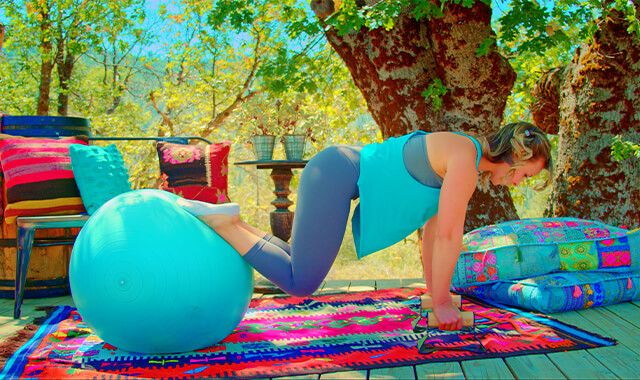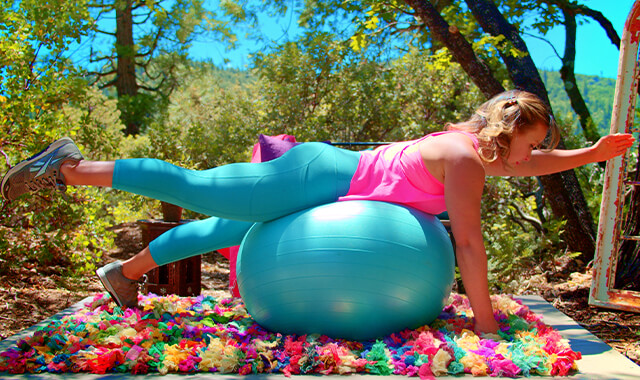Box Step Farmer Carry - core exercise
How to Do Box Step Dumbbell Farmer Walks - Grip Strength Exercise | In-Depth Guide [VISUAL LEARNERS] Beginner
Proper Form & Common Mistakes | Home Resistance Training
WHAT DO YOU WANT TO SEE?
QUICK DEMO
QUICK DEMO
MUSCLES THIS WORKS
MUSCLES
MAIN MUSCLES WORKED IN the Box Step Farmer Carry
ALL CORE MUSCLES
OTHER MUSCLES WORKED:
- Most muscles of the upper and lower body
STARTING POINTERS
Starting Pointers
WHAT WE'RE DOING TODAY
ALL WE'RE DOING:
Walk in a "soldier-like way" - lifting the knees high as we walk.
The Box Step Farmer Carry is a dynamic and functional exercise that not only builds strength but also improves stability and coordination. This variation of the Farmer Carry involves walking forward, backward, and side-stepping to the left and the right. Changing directions will work more of the muscles (two planes of motion). It is a good idea to challenge the control of the core muscles by changing directions. Training the core muscles to work in coordination to hold the torso stable as the body moves through space, changing speed and directions is more like real life. In this version of the Farmer Carry, it is fun to play around with adding a little bit of speed, not like running, just picking up the walking pace a little bit. This adds the challenge of having to “put on the brakes” before changing directions. This is very effective for training the muscles to stabilize all the joints of the legs and the spine.
This is a good option if you don’t have a lot of space for walking 25-30 steps. You will need four objects that you can put on the floor to mark the corners of the box. The Farmer Carry Box is just what it sounds like it would be. You will be walking in a box pattern. To begin, walk forward, then sidestep, walk backward, and sidestep to close the box. This exercise combines forward walking with side-stepping and adds in some backward walking to get the gluteus maximus, hamstrings, and calf muscles.
HOW TO DO THE EXERCISE
LOOKS
HOW Box Step Farmer Carries SHAPE OUR BODY
Toned midsection, arms, forearms, thighs, and calves. Good posture. Strong and confident movement.
PROPER FORM
PROPER FORM: Box Step Farmer CarrY
EQUIPMENT, SETS & REPS
EQUIPMENT
2 dumbbells or kettlebells.
4 objects to mark the corners of the box.
Shoes can be worn to help absorb the impact of the extra weight.
SUGGESTED STARTING WEIGHT FOR WOMEN:
10-30 lbs (in each hand).
SETS & REPS:
Reps would be dependent on the size of the box - about 5 in each direction; or 3-5 reps of 30 seconds in each direction.
PACE:
Focus on form and rest when needed.
BODY POSITION
BODY POSITION FOR THE Box Step Farmer Carry
PLACE THE OBJECTS ON THE FLOOR: Put the four objects on the floor an equal distance apart to make a square.
FEET: Feet in a normal stance, for your normal walking. Toes forward.
BODY STANCE: Standing with a neutral spine (includes neck), sternum lifted, shoulder blades in and down. Space between your earlobe and the top of your shoulder. Stand facing the first object - this should be the bottom left-hand corner of the square (you will be moving clockwise around the square).
HAND/GRIP: Grip the weights like you would heavy grocery bags by the handles, fingers, and thumbs curled around the handles securely.
ARMS: Arms holding weights at sides - just slightly held away from your hips (about 4 inches). Your shoulders should be stacked over your hips. Your elbows should have a slight bend to decrease the strain on your ligaments and put your muscles in a position in which they are able to work to stabilize your elbow joint.
HOW TO DO
HOW TO DO the Box Step Farmer Carry
CUE: The weights should be heavy enough for your walking to feel challenging - you should feel weighed down.
You will be walking in a square - around the outside of the objects, but you will always be facing the same direction. You will be walking forward, sidestepping, backward, and side-stepping to complete the square.
Walk forward with a normal gait pattern. If the weight is quite heavy it is fine to shorten your stride length. Walk forward towards the second object - this should be the upper left-hand corner of the square. Walk just past the object.
Once you have passed the object still facing the same direction, side-step towards the third object (the upper right-hand corner). Pick up the right leg, and step out to the side without leaning your torso. Bring the other leg in next to your stepping leg. Continue side-stepping just past the third object.
Walk backward towards the 4th object. Once past the 4th object (or corner of the square), sidestep to the left towards your starting position to close the square.
Complete the desired number of reps or time, and reverse the direction to do counter-clockwise squares.
As you get comfortable with the movements, you can pick up the speed a little - as long as you are able to keep your form perfect.
HOW TO SAFELY GET OUT OF THE EXERCISE
Squat down and place the weights on the floor.
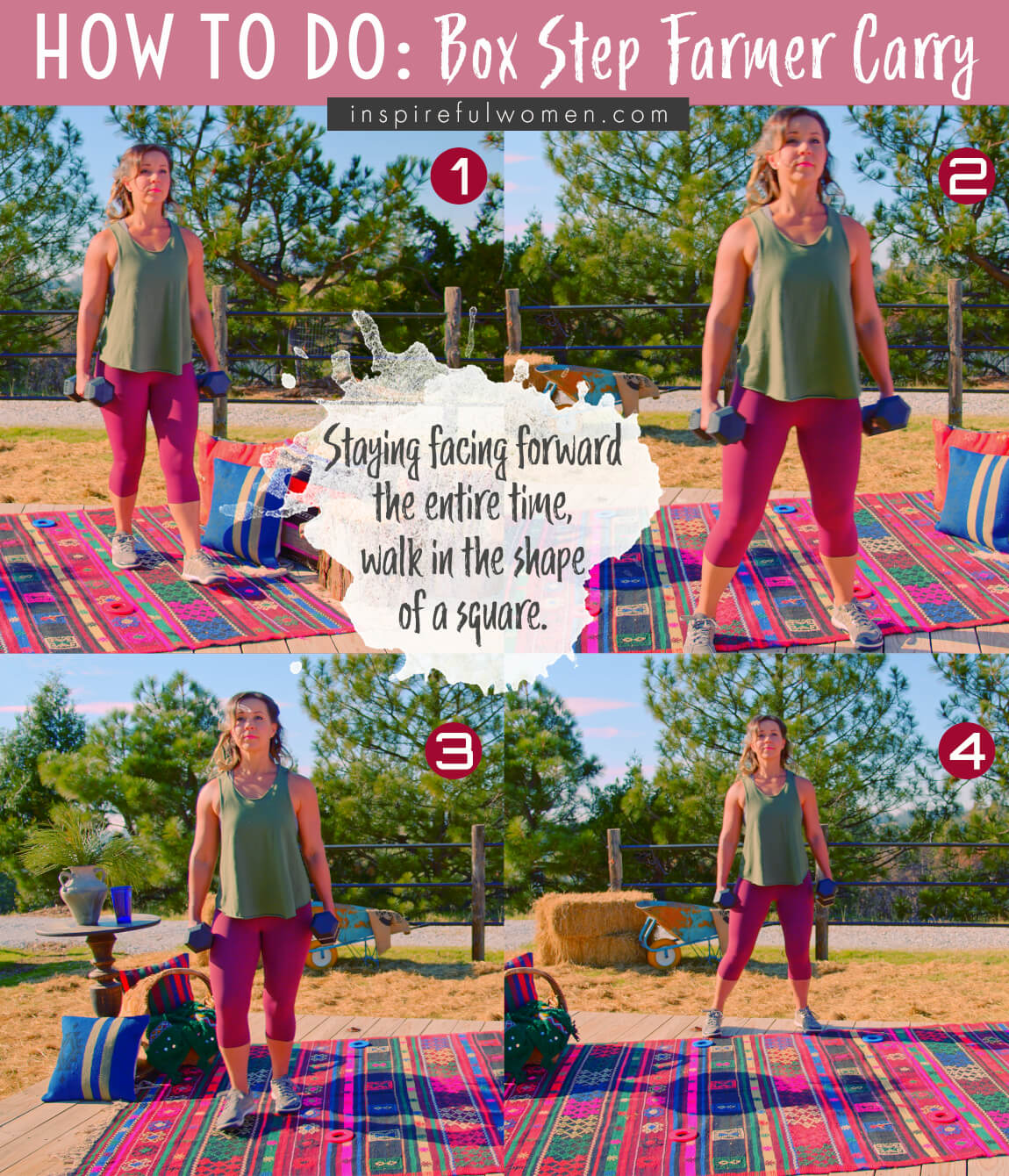
COMMON MISTAKES
COMMON MISTAKES
WHAT TO AVOID WITH THE Box Step Farmer Carry
KEY TIP:
Guess what? Good news! Many avoids are the same for most movements. Once you learn the basics, there's really only a few extra avoids for each individual movement.
1. Avoid trunk collapsing forward
AVOID: Letting the trunk collapse forward.
WHY NOT?
- This puts a lot of compression through the spine which can cause injury.
WHAT TO DO:
- Keep the sternum lifted, and your shoulders back, and activate your core muscles to prevent slouching forward.

2. Avoid swinging arms
AVOID: Swinging your arms.
WHY NOT?
- The back muscles will have to work to slow down the movement of the arms.
- This can strain the back.

3. Avoid steps too big
AVOID: Taking steps that are too big.
WHY NOT?
- This results in a lurching motion because you are shifting your weight along with the weight you are holding forward and backward.
- This is similar to being top-heavy and swaying your upper body back and forth.
- May cause injury to the low back trying to correct the center of mass and maintain good posture.
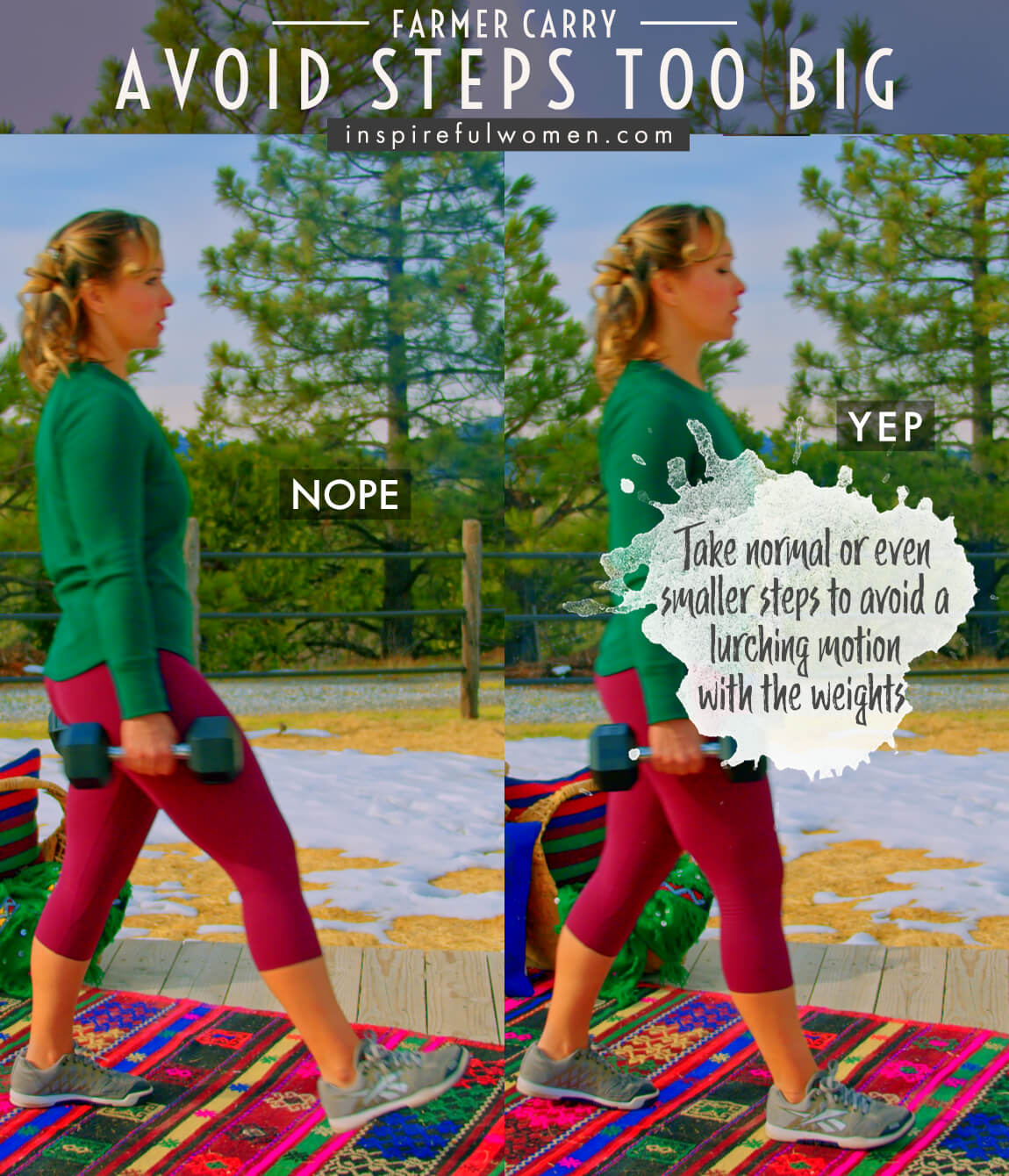
4. Avoid shuffling
AVOID: Shuffling the feet.
WHY NOT?
- This will decrease the effectiveness of the exercise.
- This is a core exercise, designed to work the muscles of the core as you lift one leg and then the other.
WHAT TO DO:
- Make sure that you are lifting your feet and taking small controlled steps while you are holding good posture.

5. Avoid shoulders to ears
AVOID: Shrugging the shoulders up towards the ears.
WHY NOT?
- It is common to try to use the upper back muscles when the arms get tired.
- Activating the upper trap and levator muscles to substitute for the arms can strain the neck and irritate the joints and nerves.
WHAT TO DO:
- Check in often with the upper trap muscle to make sure it is relaxed, if it is not, pull the shoulder blades back, lift the sternum and activate the abdominal muscles.
- If that does not help, lower the weights you are using.

6. Avoid Foot rolling in Or out
AVOID: Letting the feet roll in (pronation) or out (supination).
WHY NOT?
- The arch of the foot is designed to move with each step to absorb the impact of the body’s weight as the foot makes contact with the floor.
- When you add more weight to the body, the muscles of the leg and foot have to absorb more shock.
- If the foot is not properly aligned, it can cause damage to the soft tissues or joints of the foot, or even the lower leg, knee, hip or back.
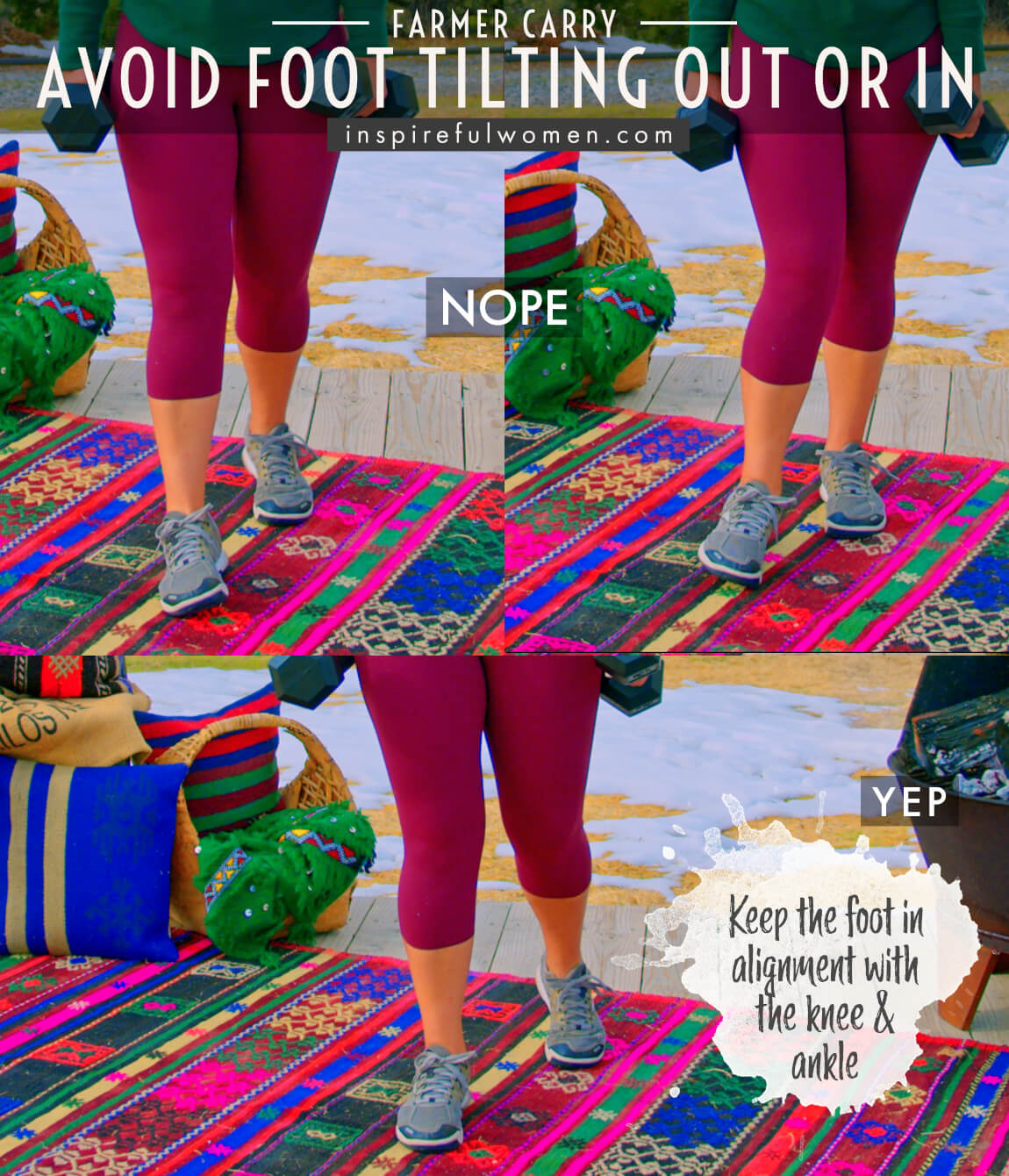
7. Avoid knee caving in
AVOID: Letting the knees collapse in (or bow out - but that is much less common).
WHY NOT?
- This is not the proper alignment of the legs.
- This can strain the ligaments (medial and lateral collateral) that support the sides of the knee.

8. Avoid shifting side to side
AVOID: Waddling.
WHY NOT?
- It is common to let the weight pull you over to each side as you step.
- This decreases the effectiveness of the exercise.
- Your upper body should stay tall and balanced, no leaning forward or to the sides.
WHAT TO DO:
- You should be able to hold a book balanced on your head.
- Activate your core muscles, lift your sternum
- Try putting your feet closer together.
- If you still are having difficulty - lower the weight you are carrying.
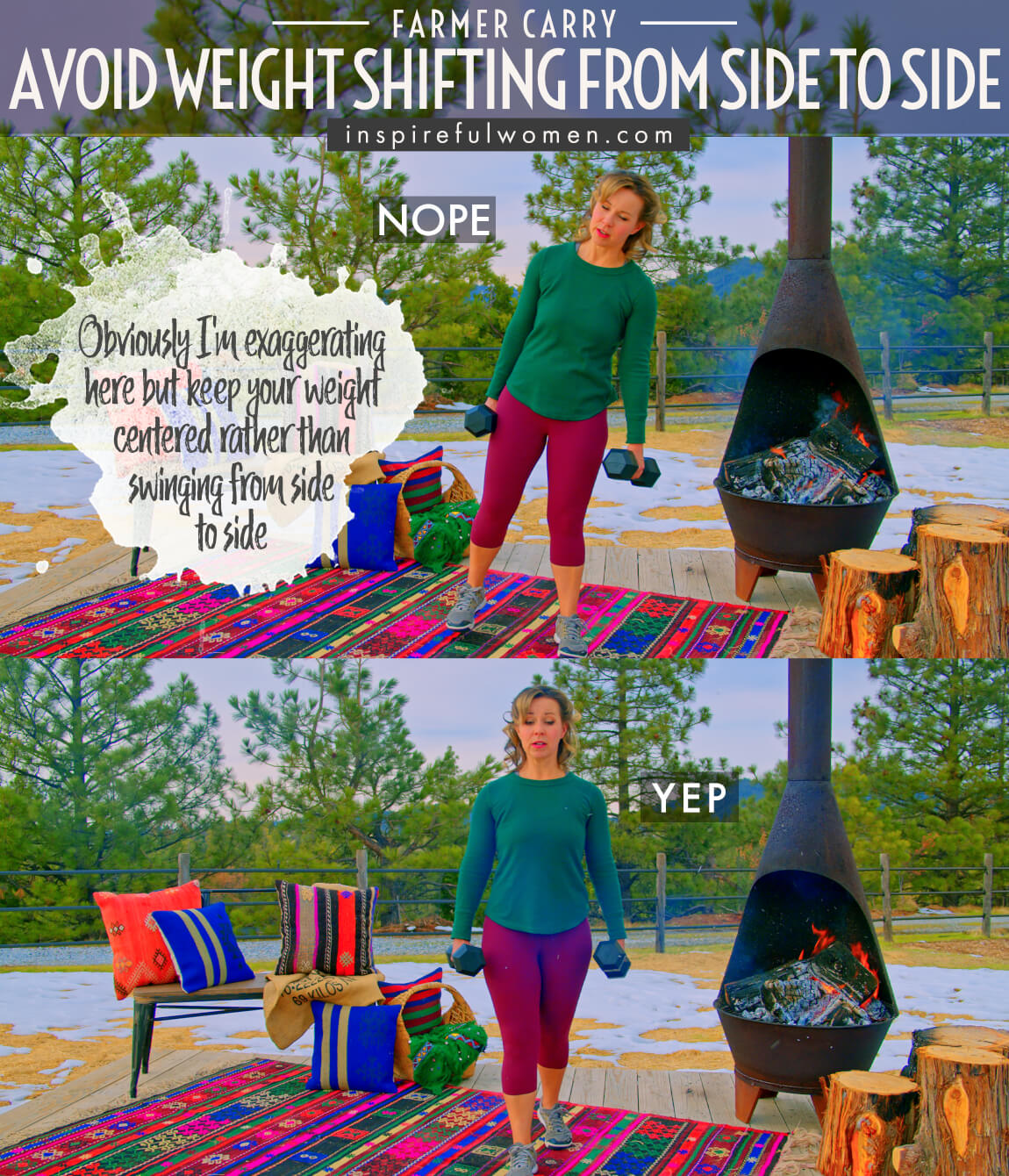
9. Avoid too much too soon
AVOID: Overdoing: Doing too many or using too much weight.
WHY NOT?
- This exercise involves loading up your body while walking - sometimes adding half of your body weight.
- The feet work like car springs - they have a curved bottom (the arch) that flattens out to absorb shock when the foot makes contact with the floor, then it springs back up - by this process it dampens the impact to protect the joints and soft tissues of the ankles and legs.
- Loading the body up puts added strain to this system.
- Overstressing the bottom of the foot can lead to plantar fasciitis or stress fractures.
WHAT TO DO:
- When you are first doing this exercise don’t do too many, use too much weight.
- Wear shoes to help cushion the impact.
10. Avoid rotating Hips out When side stepping
AVOID: Rotating your shoulders or hips.
WHY NOT?
- This will decrease the target muscle activity and could strain the low back.
- There is a tendency to try to turn your torso towards the directions you are moving.
- This will defeat the goal of the exercise which is to work the muscles on the inside and outside of the legs.
- (Me: make sure I understand, is this because as a basic principle, whatever muscles are positioned in the same plane as the direction of movement is what muscles will be working? Is that the basic principle? From Carol: No, the muscles can originate and attach in different planes, so many muscles can move bones in different planes for instance the biceps can flex the elbow and supinate the forearm, the adductor magnus can adduct and extend the hip. The glute max can extend and externally rotate the hip. Turning towards the direction that they are walking flexes the hip instead of abducts it. Abductors are weaker than the quads, the brain will want to turn the body so that the body does not have to work as hard.)
WHAT TO DO:
- The shoulders and hips should be stacked and square.
- You should be able to draw a box with a line through the shoulders, down to the hips, through the hips, and back up.
- Keep the box in one plane - not allowing it to bend or rotate.
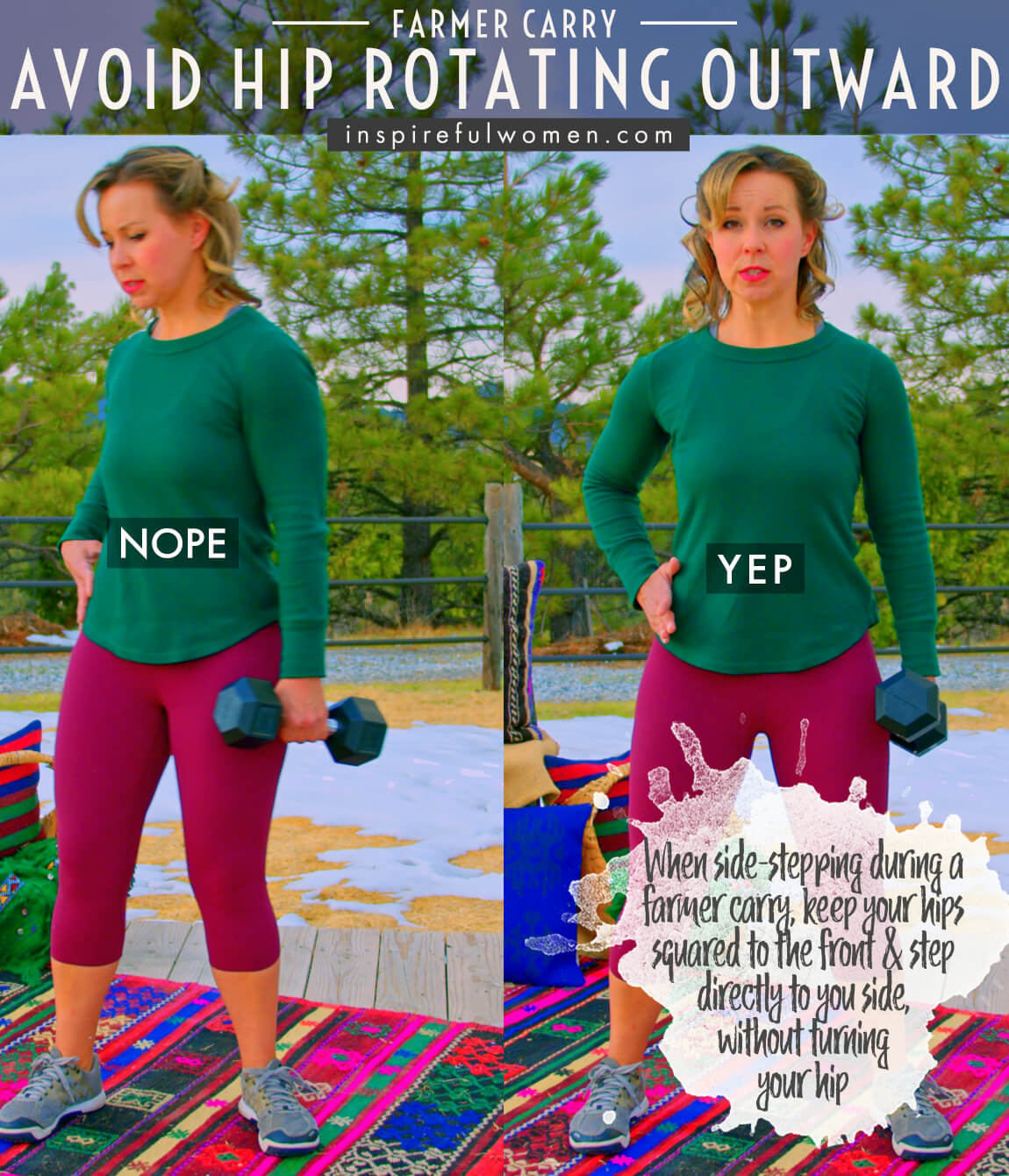
11. Avoid landing toes first
AVOID: Landing on your toes and pushing off of the toes.
WHY NOT?
- This will decrease the muscle activity of the hip abductors and adductors.
WHAT TO DO:
- Try to lift the foot off as one segment instead of rolling up onto the toes.
- Try to set the foot down as one segment instead of landing on the toes.

12. Avoid leaning back
AVOID: Leaning back.
WHY NOT?
- When the arms are held overhead the weights can pull the arms back causing the back to arch.
- This will increase the pressure in the low back which can result in injury.
WHAT TO DO:
- Keep the weights over the shoulders, and over the hips.
- Activate the abdominal muscles to keep you aligned.
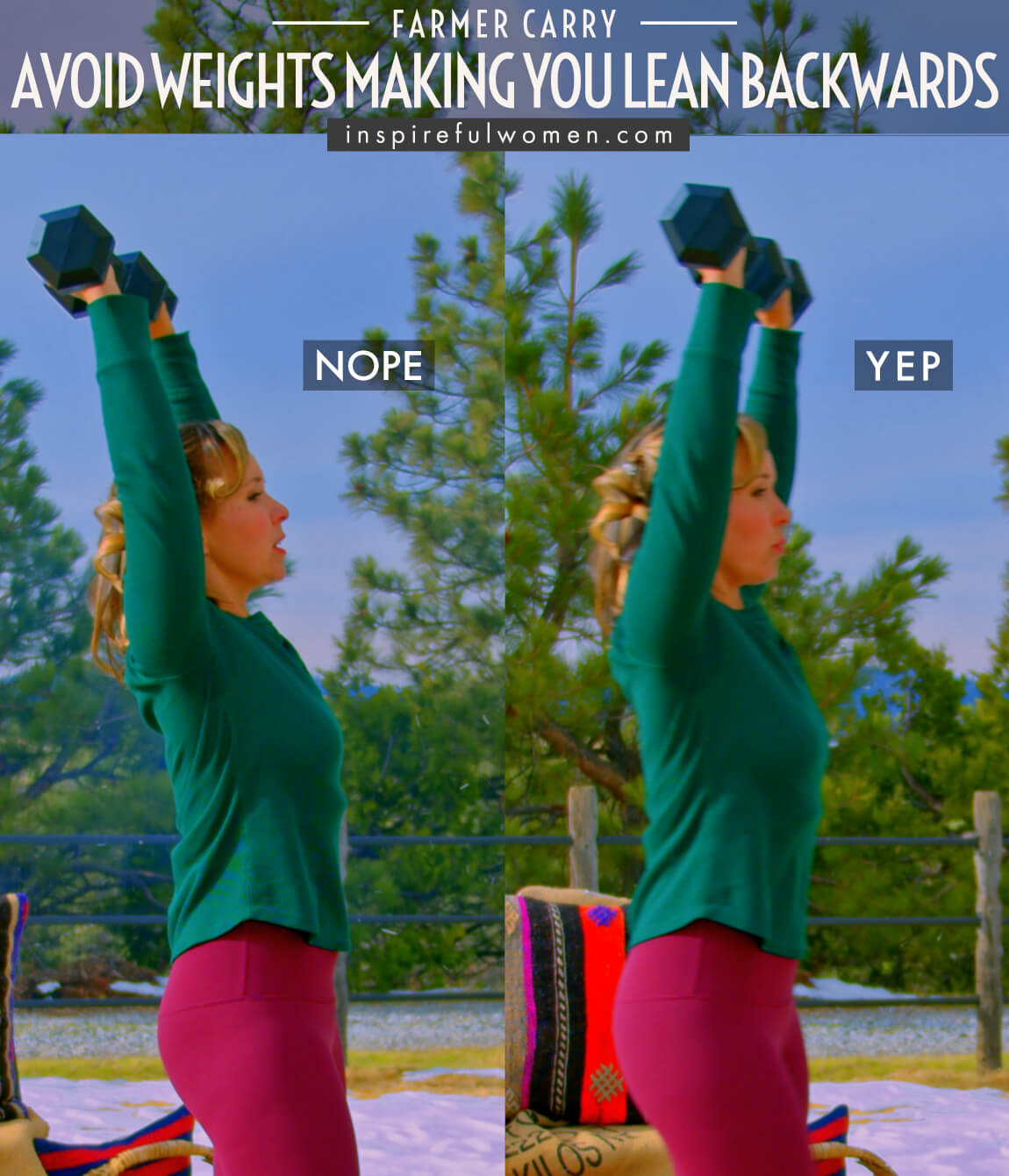
13. Avoid weights in front
AVOID: Not getting the weights right over the shoulder joints.
WHY NOT?
- Having the weights in front of the shoulder joints can put too much strain on the shoulders, arms and low back.
WHAT TO DO:
- Keep the weights over the shoulders, and over the hips.
- If you cannot keep the weight over the shoulder joint, lower the weight or choose a different variation of the exercise that does not involve holding the arms overhead. The one dumbbell goblet style would be a good choice.
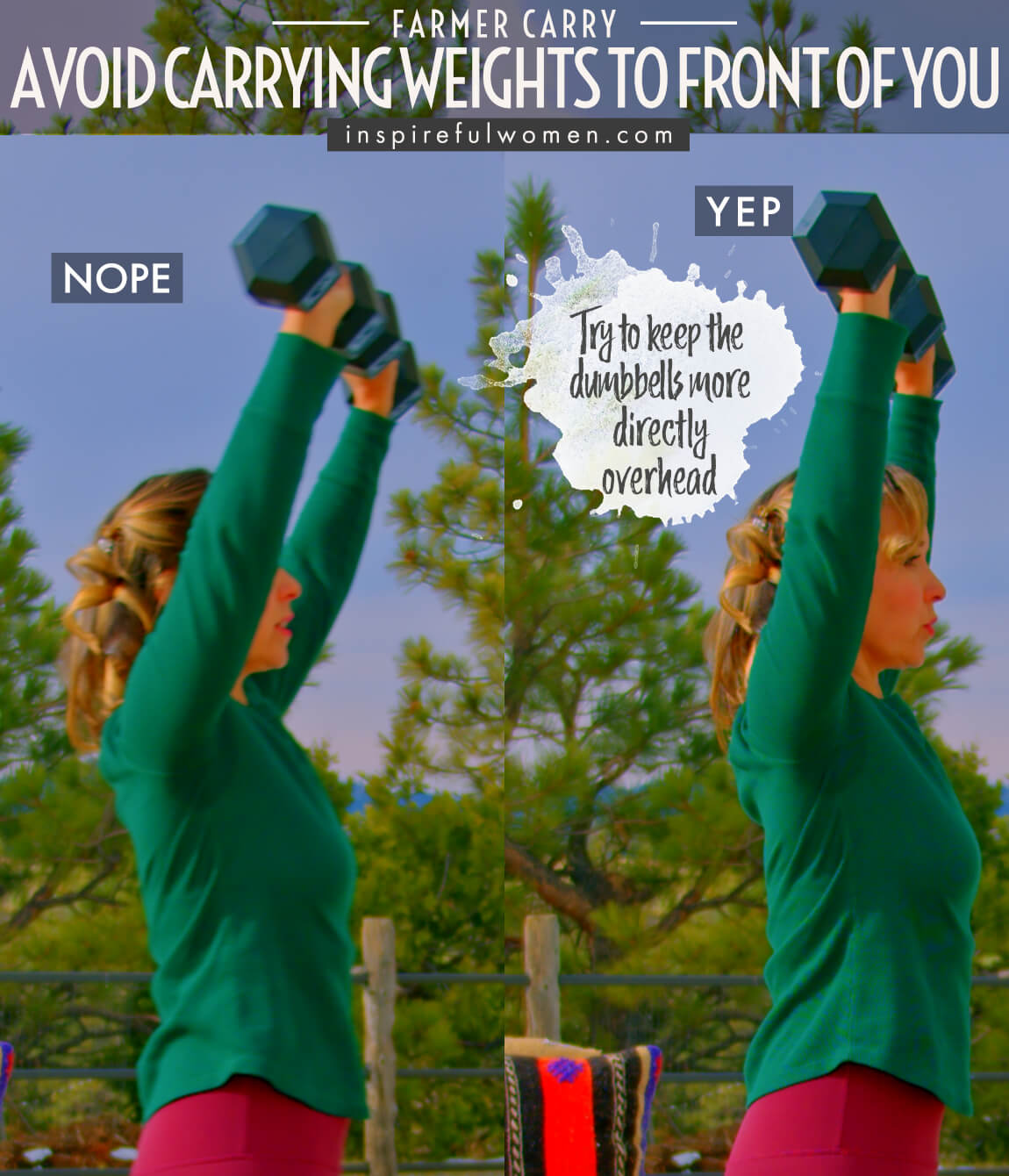
14. Avoid locking elbow joints
AVOID: Locking or hyperextending the elbow of the arm that is weighted and overhead.
WHY NOT?
- This can strain the ligaments of the elbow.
- Also decreases the activity of the arm muscles -they relax and rely on the ligaments to do the supporting.
WHAT TO DO:
- When pressing overhead, press until straight but not locked or hyperextended.
- When in doubt, keep a slight bend in the elbow.
15. Avoid bending wrists
AVOID: Letting the wrists bend under the weight. For versions that involve holding the arm with the weight above the hand.
WHY NOT?
- Letting the wrist bend back under weight can strain the wrist joints.
- One of the goals of these versions is to strengthen the muscles that hold the wrist stable.
WHAT TO DO:
- Keep your wrist straight.
- If you cannot keep the wrist straight, lower the weight or choose a different variation of the exercise that does not involve holding the weight over the wrist.
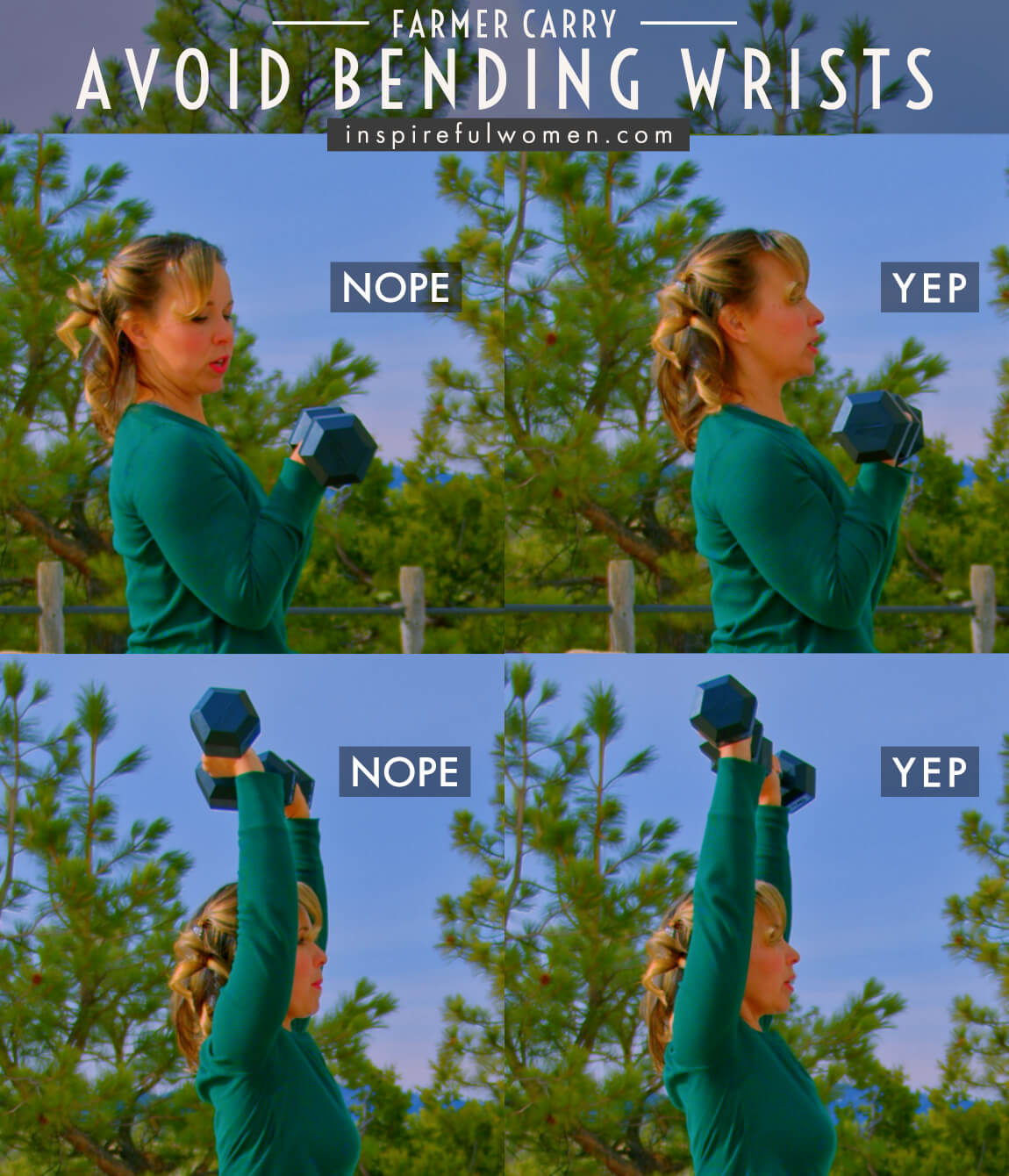
16. Avoid leaning torso side to side
AVOID: Leaning the body away as you press one arm up.
WHY NOT?
- This would mean that you are side bending the spine.
- The goal of the exercise is to keep the spine in neutral and still as the arms move up and down.
WHAT TO DO:
- The movement should be coming from the shoulder blade and the arm, not the spine.
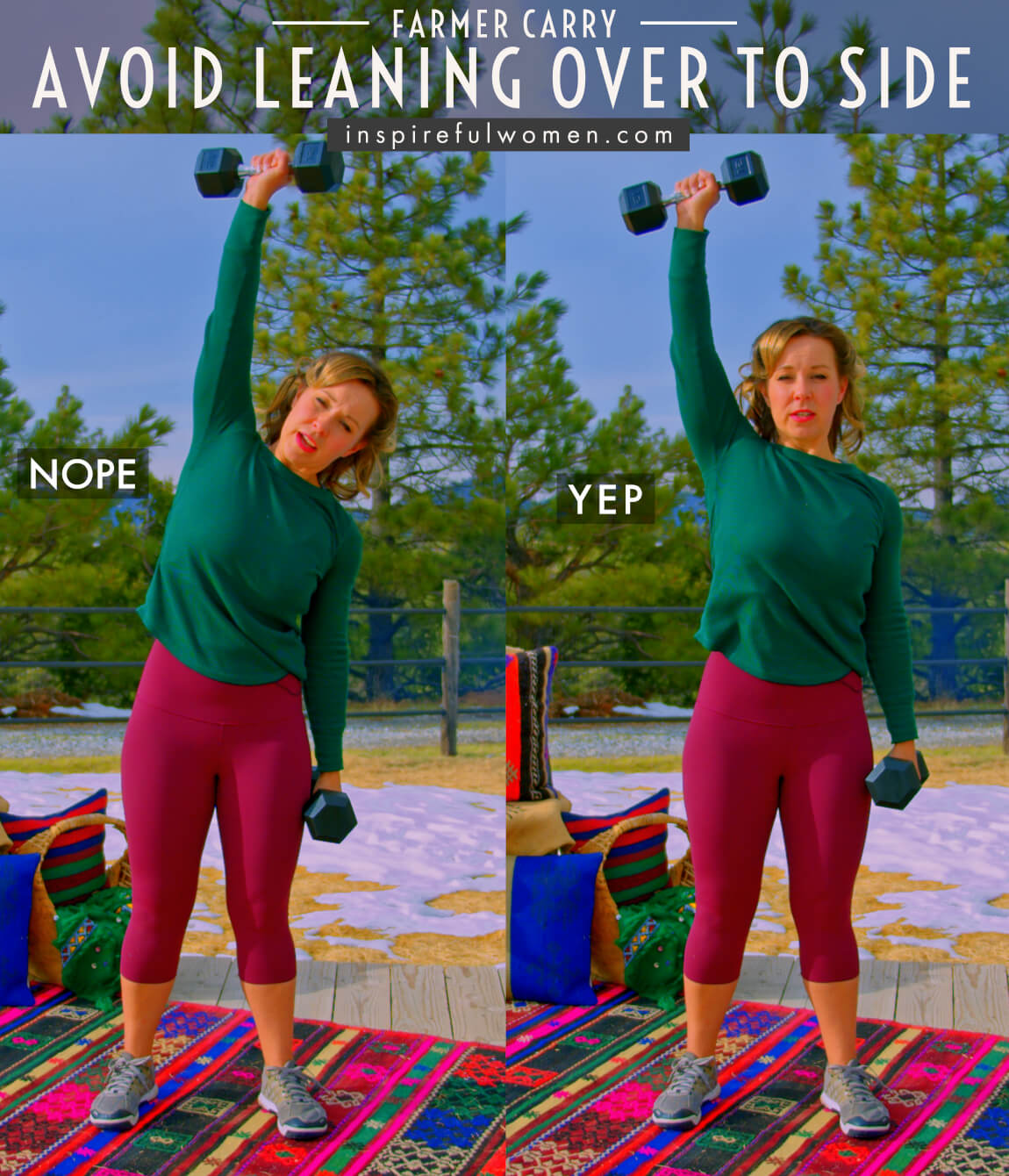
17. Avoid Rotating Hips
AVOID: Rotating your shoulders or hips.
WHY NOT?
- This will decrease the target muscle activity and could strain the low back.
- There is a tendency to try to turn your torso towards the direction you are moving.
- This will defeat the goal of the exercise which is to work the muscles on the inside and outside of the legs.
WHAT TO DO:
- The shoulders and hips should be stacked and square
- You should be able to draw a box with a line through the shoulders, down to the hips, through the hips, and back up.
- Keep the box in one plane - not allowing it to bend or rotate.
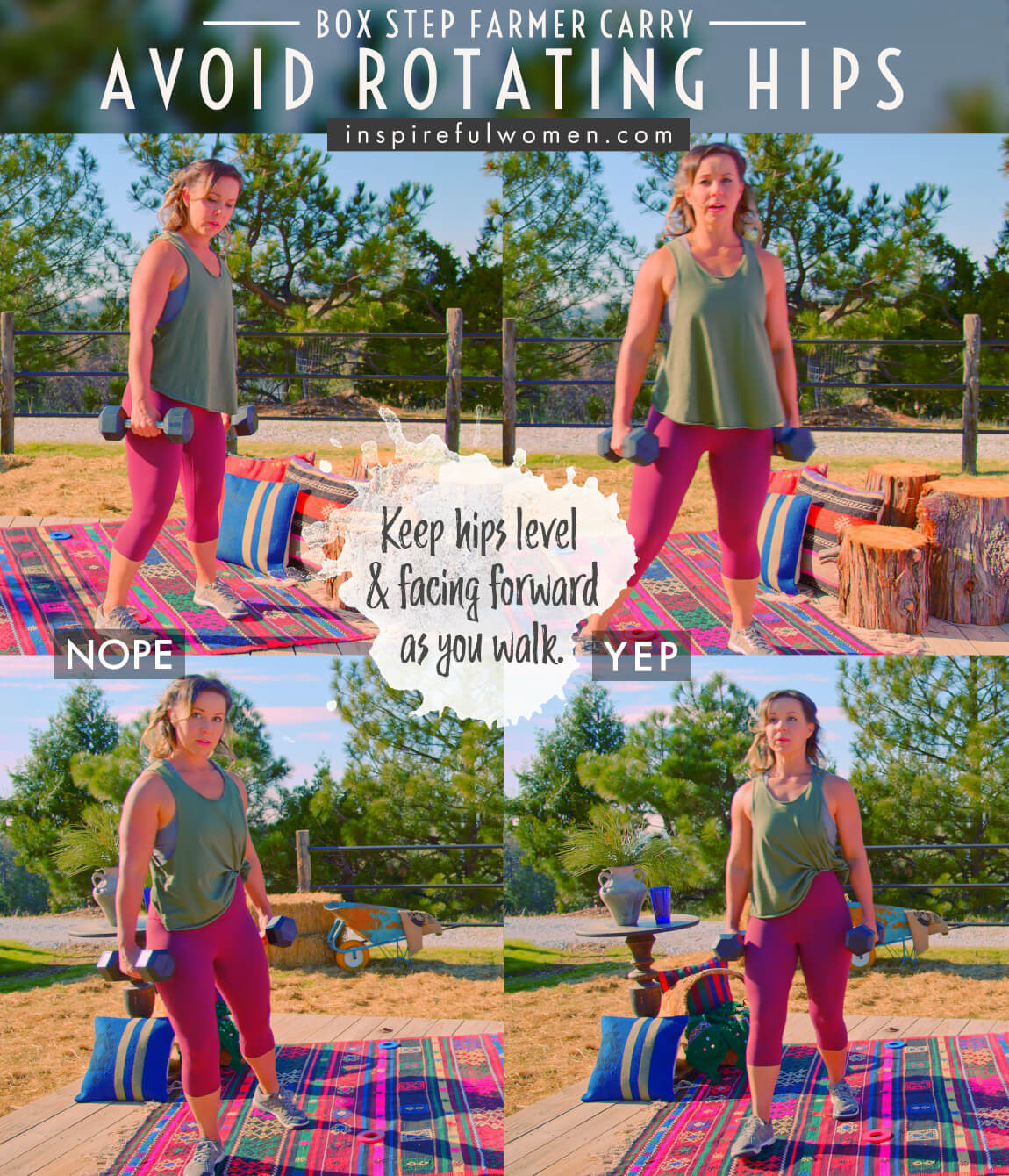
WHAT WE'RE DOING TODAY
WHAT & WHY
BENEFITS OF TRAINING core MUSCLEs
WHAT
The Farmer Carry is a total body exercise. This is a very straightforward exercise - you hold heavy weights in your hands while you walk. The goal IS to hold fairly heavy weights- this is not a 5 lb dumbbell exercise, even for us ladies. The added weight loads the spine in a healthy way, challenging all of the posture muscles, as well as improving our grip strength. The hands, arms, and shoulders have to work hard to hold the weight and the legs need to work to move the weighted body. The focus is on:
- Keeping your spine in good alignment (perfect posture)
- Lifting your feet as you walk, and
- Holding the arms still under the added load for approximately 30 seconds.
This may not seem like a long time but this is a very challenging exercise. There are many interesting versions to try, you can mix and match different variations to target many different muscle groups.
Ideas for heavier loading when you don’t have heavier dumbbells or kettlebells:
- Actual grocery bags with heavier items in them
- Laundry detergent jugs
- Milk jugs
- Full water bottles
- If any of these items are uncomfortable on your hands, you can wrap a small towel around the handle
WHY BOTHER DOING IT?
WHY
WHY DO WE EVEN CARE?
BENEFITS OF FARMER CARRIES:
- Core Strength
- Grip Strength
- Back Muscles
- Posture correction
BECAUSE CARRY HEAVY THINGS WE DO
The Farmer Carry is a very functional exercise. We have to be able to carry things, and we need to be able to do so with good posture and alignment to prevent injury. This exercise is good for increasing the strength and stability of all of the muscles needed to create a stable base for the arms and legs to work off of - making it a good foundation exercise for if you want to be able to safely push/pull/lift/carry more weight.
It does not matter how strong your arms are if the rest of the body cannot support the weight. This exercise helps to strengthen “the rest of the body”. The muscles that surround the shoulder, elbow, wrist joints, core, hips, and legs will have to work to stabilize the joints as they carry the heavy load.
IT'S ABOUT LEARNING TO KEEP STILL WHILE MOVING - NO MORE SLOPPY JOINT MOVEMENT
In the Farmer Carry, there is very little joint movement*, the focus is on holding the body pretty still. The only joint movement is in the hips, knees, ankles, and feet, but the range of movement is pretty small. *There are some variations that involve arm movement. Loading the body but limiting the movement at the joints is a good way to strengthen the muscles that stabilize the joints. Stabilizing joints means being able to prevent excessive movement at joints when holding or moving heavy things. If the muscles surrounding these joints are not trained to do this, excessive movement or unhealthy movement in the joint can occur in a way it’s not designed to, causing damage over time or injury to the cartilage & ligaments. The joint movement is sloppy.
The muscles are worked under a moderate to heavy load for a longer duration of time (longer than most weight-lifting exercises), without much active movement of the joints. This trains the muscles for endurance - working for a long time, as opposed to short bursts of activity. The shoulder and elbow joints are holding a heavy weight that pulls down on the arm - the muscles of the shoulder region and arm must work together and stabilize (compress - to prevent dislocation) the joints.
GRIP STRENGTH
I don’t know about you, but I often find that I have the strength for something heavy when it comes to most other parts of my body EXCEPT my hands- my grip. My legs are fine, my core is fine, and my shoulders/upper arms are fine- but it’s my grip & my hands that are giving out.
This is also a very good exercise for training grip strength, not only gripping to hold but holding for a longer period of time - like when you have to lift and push a loaded wheelbarrow for a long distance. Poor grip strength can interfere with the ability to live independently. The elderly have difficulty with gripping for simple activities like turning doorknobs, opening jars, using a can opener, opening medicine bottles, picking small items up, using hammers, and turning on faucets. As young as 40 years of age, grip strength can begin to decline. In older adults (around 60) grip strength has been used as a way of measuring general body strength and overall muscle mass. Research has even associated decreasing grip strength with declining cognition, mobility, functional status, and mortality.
CALF STRENGTH
Other benefits of the Farmer Carry include improving calf strength which puts the spring in your step. The calf muscles are responsible for the push-off while you walk. This is something that also decreases with age, leading to a slower gait, and shorter stride length. Also improves static (standing still) and dynamic (walking, stair climbing, running) balance.
This is great because there are not a lot of home exercises that specifically target the calves well, where we point our toes to some degree, outside of the various calf raises we have, which are really just variations of 1 exercise, the calf raise. Many other exercises like squats will utilize the calves to some degree, but since the foot remains flat on the floor the whole time, we’re not getting a really good full range of motion contraction for the calf in a movement like that.
GOOD FOR BONE DENSITY
This exercise is a good weight-bearing exercise - the increased load will increase the load put through the bones of the spine, pelvis, and legs. This type of exercise builds bone density, so good for the prevention and or treatment of osteopenia and osteoporosis.
EVERYDAY LIFE
EVERYDAY LIFE &
MUSCLE FUNCTION
HOW WE USE OUR core MUSCLES IN EVERYDAY LIFE
CORE MUSCLES:
1. HOLD YOUR TORSO UPRIGHT
The main job of the core muscles is to hold you stable any time that you are upright and when you move. The core muscles work together in coordination all day long. The amount of muscle activity increases with the intensity of the activity. The core muscles are more active during:
- Carrying
- Kids
- Grocery bags
- Water softener salt
- Dog Food
- Cement
- Suitcases
2. THE CORE MUSCLES TRANSFER FORCE FROM THE LEGS TO THE ARMS DURING:
- Lifting
- Kids
- Boxes
- Groceries
- Pushing
- Wheelbarrow
- Heavy grocery cart
- Stroller
- Lawnmower
- Vacuum
- Pulling
- Wagon
- Garden hose
FARMER CARRIES TRAIN HAND/FOREARM MUSCLES IN THIS WAY:
3. GRIP STRENGTH
- Opening jars
- Using a can opener
- Buckling seat belts
- Turning a doorknob
- Carrying items with handles
- Baby car seat
- Suitcases
SCIENCY STUFF
SCIENCY STUFF
SPIFFILICIOUS FACTS ABOUT MUSCLES & MOVES
The shoulder joint (glenohumeral joint - between the shoulder blade and the upper arm bone) is the least stable joint in the body. The only bony attachment it has to the spine is at the joint between the collarbone (clavicle) and the top of the breastbone (sternum). The arm is held in the socket of the shoulder blade by many ligaments and a small cup-shaped cartilage (the labrum) that acts somewhat like a suction cup. When the arm is just hanging by the side of the body, the muscles are not active. When moving the arm or lifting an object, the muscles (rotator cuff and others) act to hold the joint together under the added load. If the load is too heavy it will overpower the muscles that are supporting the joint. This can result in damage to the muscle, ligaments, cartilage, or bones. In addition to this, the shoulder blade is essentially floating in a sea of muscles. The only attachment to the spine is through the collarbone to the sternum. This makes it extremely mobile. When you pick up an object, if the muscles that hold your shoulder blade still are too weak to stabilize against the load you are lifting then instead of the arm lifting up the object, the shoulder blade will be pulled down and forward (into protraction and downward rotation). In order to have normal mechanics (the muscles working to keep the shoulder joint together) when lifting an object, the shoulder blade must be stable so that the arm moves as opposed to the shoulder blade moving. An analogy would be a swing hanging from a branch. If the branch and the trunk are stable and you tie a swing to the branch then you can sit on it. If the area where the branch attaches to the tree is weak and you sit in the swing, then the branch may break off of the strong trunk. If the branch is strongly attached to the trunk but the trunk is weak, then the trunk may bend and break. The heavier the person on the swing, the stronger the trunk needs to be in order to be able to support the branch, especially if you add weight to the branch. So it does no good to strengthen an arm if you do not strengthen the supporting structure, in fact, it can do a lot of damage. Furthermore, the supporting structures (branches and the trunk) usually don’t break right away. The structure is weakened over time until it fails. This is true for overloading any object, over time the supporting structure will suffer tiny bits of damage (cracks), bend, and eventually break under the load.
ALLLL MUSCLES & WHEN
ALL MUSCLES WORKING & WHEN DURING THE Box Step dUMBBELL Farmer Carry
The muscles of the trunk, shoulders, arms, wrists, and hands will work throughout the exercise. The muscles of the trunk work as shock absorbers for the spinal column under the increased compression due to the increased load (holding weights in arms). The trunk muscles also work to hold the body in an upright position during walking.
The muscles of the shoulders, arms, and forearms work to stabilize the shoulder, elbow, and wrist against the traction (downward pull of gravity pulling the joints apart) of the joints.
The muscles of the forearm and hand work to grip the weight.
Forward walking: The leg muscles will work a bit more than with an unweighted gait, but usually, the range of movement of the hips and knees decreases when you carry heavy objects, and in general muscle activity does not change very much.
The calf muscles (gastrocnemius and soleus) will work harder to propel the weighted body forward with each step (push-off phase).
The side-stepping starts with the muscles on the outside - gluteus medius, minimis, and peroneals, of the stepping leg working concentrically to lift the leg out to the side. All of the muscles of the stepping leg will contract to stabilize as the trailing leg is brought over to meet it (the adductors of the trailing leg act concentrically to move the leg in, but the effort is minimal, only the weight of the leg moving horizontally). In sidestepping the tendency is to lean the upper body when you step out. The quadratus lumborum and obliques will be more active (than in the standard Farmer Carry - forward walking) to hold the spine neutral.
The backward walking begins with concentric contraction of the gluteus maximus and hamstring to move the leg behind the body and then pull the body over the leg until the leg is straight down under the hip. When the toes touch down on the floor, the gastroc and soleus contract concentrically to pull the tibia back from dorsiflexion to neutral.
PIN IT FOR LATER!
